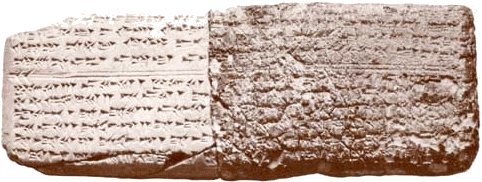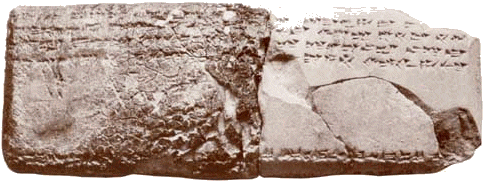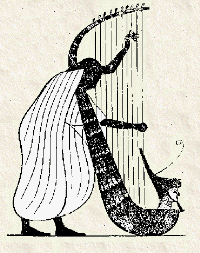
Wednesday, June 29, 2011
Sergila ..A Distinguished Ancient Syrian Village Sample

Sergila archeological village lies next to al-Bara village on al-Zawia Mountain in Idleb Province, about 330 km from Damascus. It is one of a group of archaeological nearby villages that are preserved in a good state. These villages give a true image of the countryside in the Northern part of Syria between the Byzantine and the Roman periods. Sergila has got various buildings, houses, churches, bathrooms and olive squeezers.
Secretary of Idleb Museum Fajer Haj Mohammd said the building style in the village consists of three main parts: the inhabitance part, the work part and the yard which is surrounded by a fence, adding that all the houses in the village consist of two stories.
Haj Mohammed pointed out that the houses have a functional role as the ground floor is used as storehouses, stables and olive squeezers, while the upper floor is dedicated for inhabitance.
He indicated that the oldest house in the village dates back to the end of the 2nd century A.D. as the poor farmers cultivated the lands surrounding the village and adopted the 'self-sufficient economy' through mixing farming with breeding livestock, in addition to oil industry.
Head of the Archeological Studies and Excavation Section at Idleb Antiquities Department Anas Haj Zeidan said Churches are one of the most important characteristics of Sergila as each the complex of churches consists of two Basilica churches with a yard.
He pointed out that the Northern Church dates back to the end of the 4th century and the beginning of the 5th century, while the Southern Church is a small basilica Church which was turned into a mosque after the Islamic conquest.
For his part, Head of Idleb Antiquities Department Nicola Kabbad said the only bathroom in the village was built in 473 A.D. and consists of a big hall in the north and small halls in the south in addition to a big store engraved in the stone.
Historian Fayez Qweasrah said the importance of studying Sergila village is that it highlights the status of the Syrian countryside during the Roman and Byzantine periods, as the studies showed that the Syrian countryside was inhabited by active farmers who speak Syriac language and know Greek language.
Statistics of Tourism Department at Idleb Province show that Sergila is considered as one of the most important tourist and archeological sites in Idleb because it attracts the largest number of the Arab and foreign tourists as well as local visitors.
The statistics showed that more than 14,000 Arab and Foreign tourist visit Sergila each year.
Palmyra Mosaics and their Hidden Meaning
By Gawilkowski, July 7, 2005.From issue 12, page 26
 One of the finest mosaics discovered in recent years has come to light at Palmyra, the great oasis city in the desert, halfway between the Mediterranean and the Euphrates. The total mosaic can be seen to the right with the two finest panels at the centre. There are numerous other smaller panels showing animals and fish, but they are all placed facing in different directions. Did the mosaic conceal some hidden meaning?
One of the finest mosaics discovered in recent years has come to light at Palmyra, the great oasis city in the desert, halfway between the Mediterranean and the Euphrates. The total mosaic can be seen to the right with the two finest panels at the centre. There are numerous other smaller panels showing animals and fish, but they are all placed facing in different directions. Did the mosaic conceal some hidden meaning? The finest panel at the centre shows Bellerophon. on the winged horse, Pegasus, slaying the Chimera.
Does this represent the Palmyrene King Odainat ,who in the 260s AD turned himself into a client king of the Romans and conquered the Sassanians, the newly emergent dynasty of the Persians who were posing a major threat to the Roman Empire?
Another picture of an archer slaying a tiger. Does this also represent Odainat slaying the Persians? Note that in both pictures, although the general outline is classical, the horseman is portrayed wearing eastern clothes with trousers.
Sunday, June 26, 2011
The Oldest Song



In 1972, after 15 years of research Prof. Anne Kilmer (professor of Assyriology, University of California, and a curator at the Lowie Museum of Anthropology at Berkeley) transcribed one of the oldest known pieces of music notation in the world.
Clay tablets relating to music, containing the cuneiform signs of the "Hurrian" language, had been excavated in the early 1950s at the Syrian city of ancient Ugarit in what is now modern Ras Shamra. One text contained a complete hymn, both words and music and is the oldest known preserved music notation in the world.
Prof. Kilmer transcribed this piece of music into modern music notation. Other individuals have also attempted to transcribe this music, with differing interpretations.
The tablets date back to approximately 1400 B.C. and contain a hymn to the moon god's wife, Nikal. Remarkably, the tablets also contain detailed performance instructions for a singer accompanied by a harpist as well as instructions on how to tune the harp. From this evidence, Prof. Kilmer and other musicologists have created realizations of the
hymn .

Cuneiform notation from the original tablets
Tuesday, June 21, 2011
Music of Syria
Syria's capital and largest city, Damascus, has long been one of the Arab world's centers for cultural and artistic innovation, especially in the field of classical Arab music. Syria has also produced several pan-Arab stars, often in exile, including George Wassoof, Assala, Mayad Henawi and more. The city of Aleppo is known for its Muwashshah, a form of Andalousian sung poetry popularized by Sabri Moudallal, as well as popular stars like Sabah Fakhri. Dabke and other forms of dance music are also popular.
Syria was one of the earliest centers of Christian hymnody, in a repertory known as Syrian chant, which continues to be the liturgical music of some of the various Syrian Christians.
Muwashshhaat
Muwashshah or muwaššah (Arabic: موشٌح, literally "girdled"; plural Muwashshhaat موشـّحات or tawāshīh تواشيح) is an Arabic poetic form, as well as a secular musical genre in the eastern part of the Arab world using muwaššah texts as lyrics. The poetic form is also used in Andalusi Nawbah which similarly originates in Al-Andalus (Muslim Spain). It is a multi-lined strophic verse poem written in classical Arabic, usually consisting of five stanzas. It was customary to open with one or two lines which matched the second part of the poem in rhyme and meter. In North Africa poets ignore the strict rules of Arabic meter while the poets in the East follow them.
Musical genre
Musically, the ensemble consists of Oud (lute), kamenjah (spike fiddle), Qanoon (box zither), darabukkah (goblet drum), and daf (tambourine), all of which often perform as the choir. The soloist performs only a few chosen lines of the selected text. In Aleppo multiple Maqam rows and up to three awzān are used and modulation to neighboring Maqamat was possible during the B section [clarify]. Until modernization it was typical to present a complete Wasla, or up to eight successive muwaššah including an instrumental introduction (Sama'i or Bashraf).[2] It may end with a Longa.
History
Examples of muwaššah start to appear as early as the ninth or tenth century CE. The full sense of the word is not clear, though it appears to be related to the word for a type of double-banded ornamental belt, the wišah. Interpretations differ, and according to one authority [who?], "Since it was held together by the concluding line as by a belt, and written down the visual effect was of a chain belt, it was called muwaššah 'girdled' poem. needed]
Syrian chant
is the chant used in Syriac Christianity.
As Syria was one of the earliest centers of Christianity, its style of chant is among the oldest in the world. However, as no early musical manuscripts exist, it is conjectural to what extent the modern repertoire reflects the early traditions.
In the early church, the music consisted of hymns and antiphonal psalmody. The earliest extant work is the Gnostic Psalter of the 2nd century, a collection of Psalm texts in hymn form reflecting a Gnostic theology. The first orthodox work are the hymns of Ephrem the Syrian (306-373), some of which are still used today. Both hymns and antiphonal psalmody were brought by St. Ambrose to Milan and are apparently the basis for Ambrosian chant.
Modern Syrian chant is much more rhythmic and syllabic than Gregorian chant.






is the chant used in Syriac Christianity.
As Syria was one of the earliest centers of Christianity, its style of chant is among the oldest in the world. However, as no early musical manuscripts exist, it is conjectural to what extent the modern repertoire reflects the early traditions.
In the early church, the music consisted of hymns and antiphonal psalmody. The earliest extant work is the Gnostic Psalter of the 2nd century, a collection of Psalm texts in hymn form reflecting a Gnostic theology. The first orthodox work are the hymns of Ephrem the Syrian (306-373), some of which are still used today. Both hymns and antiphonal psalmody were brought by St. Ambrose to Milan and are apparently the basis for Ambrosian chant.
Modern Syrian chant is much more rhythmic and syllabic than Gregorian chant.
Subscribe to:
Comments (Atom)
